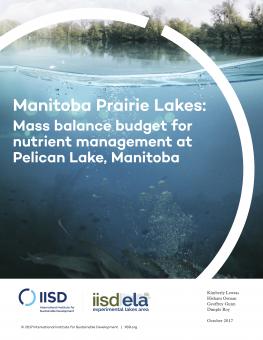
Manitoba Prairie Lakes: Mass balance budget for nutrient management at Pelican Lake, Manitoba
This study documents the variance and relative importance of different nutrient sources and internal lake processes for a Prairie lake (Pelican Lake, Manitoba).
While the water quality of many prairie lakes is monitored and the extent of the eutrophication—and associated negative consequences—generally understood, information on the specific nutrient sources and in-lake processes is often insufficient to identify specific management options.
This study sought to conduct a water and nutrient mass balance, identifying the variance and relative importance of different nutrient sources and internal lake processes for a lake that could be used as a general model for other prairie lakes. As with many other shallow prairie lakes, the eutrophication of Pelican Lake has become increasingly pronounced over recent years.
Participating experts
You might also be interested in
Manitoba Prairie Lakes: In-lake remediation treatment summary
This is a summary of a comprehensive research study (Manitoba Prairie Lakes: Eutrophication and In-Lake Remediation Treatments Literature Review) in which IISD examines in-lake remediation treatments.
Manitoba Prairie Lakes: Eutrophication and in-lake remediation treatments Literature Review
Eutrophication—the enrichment of ecosystems with chemical nutrients—has deteriorated water quality in many of Manitoba’s lakes.
INC-4 Is an Opportunity to Address Fresh Water Pollution – This is how
INC-4 is the fourth meeting in a series of international negotiations that aims to develop a global treaty on plastic pollution that could and should have big implications for freshwater quality both in Canada and beyond.
Northwest Ontario Side Story: IISD Experimental Lakes Area Annual Report 2022-2023
This year's annual report is a celebration of all things creative at the world's freshwater laboratory, from the science to music, photography and theatre.